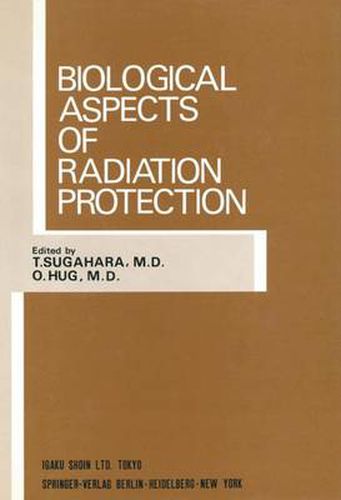Readings Newsletter
Become a Readings Member to make your shopping experience even easier.
Sign in or sign up for free!
You’re not far away from qualifying for FREE standard shipping within Australia
You’ve qualified for FREE standard shipping within Australia
The cart is loading…






This title is printed to order. This book may have been self-published. If so, we cannot guarantee the quality of the content. In the main most books will have gone through the editing process however some may not. We therefore suggest that you be aware of this before ordering this book. If in doubt check either the author or publisher’s details as we are unable to accept any returns unless they are faulty. Please contact us if you have any questions.
In the maintenance and development of sound standards of radiation protection, many types of enquiry are important. These range from the purely technical examination of the ways in which exposure may occur or radionuclides may enter the body under existing or new conditions of occupational activity, to the most fundamental studies of the interaction of high energy particulate radiation with matter or the metabolic localisation and kinetics of unfamiliar radionuclides. One of the most important, and most basic, problems, however, is to establish a quantitative estimate for the frequency with which various types of injury would be induced in man following exposure to low doses of radia tion delivered at low dose rates. No sound limits can be proposed for appropriately safe levels of occupational or population exposure unless the associated hazard-or its maximum likely value-can be at least approximately assessed. It is one of the most important tasks of those concerned with radiation protection that these criteria should be kept under constant review in the light of developing knowledge, and that the fields in which further information is needed should be defined and described.
$9.00 standard shipping within Australia
FREE standard shipping within Australia for orders over $100.00
Express & International shipping calculated at checkout
This title is printed to order. This book may have been self-published. If so, we cannot guarantee the quality of the content. In the main most books will have gone through the editing process however some may not. We therefore suggest that you be aware of this before ordering this book. If in doubt check either the author or publisher’s details as we are unable to accept any returns unless they are faulty. Please contact us if you have any questions.
In the maintenance and development of sound standards of radiation protection, many types of enquiry are important. These range from the purely technical examination of the ways in which exposure may occur or radionuclides may enter the body under existing or new conditions of occupational activity, to the most fundamental studies of the interaction of high energy particulate radiation with matter or the metabolic localisation and kinetics of unfamiliar radionuclides. One of the most important, and most basic, problems, however, is to establish a quantitative estimate for the frequency with which various types of injury would be induced in man following exposure to low doses of radia tion delivered at low dose rates. No sound limits can be proposed for appropriately safe levels of occupational or population exposure unless the associated hazard-or its maximum likely value-can be at least approximately assessed. It is one of the most important tasks of those concerned with radiation protection that these criteria should be kept under constant review in the light of developing knowledge, and that the fields in which further information is needed should be defined and described.